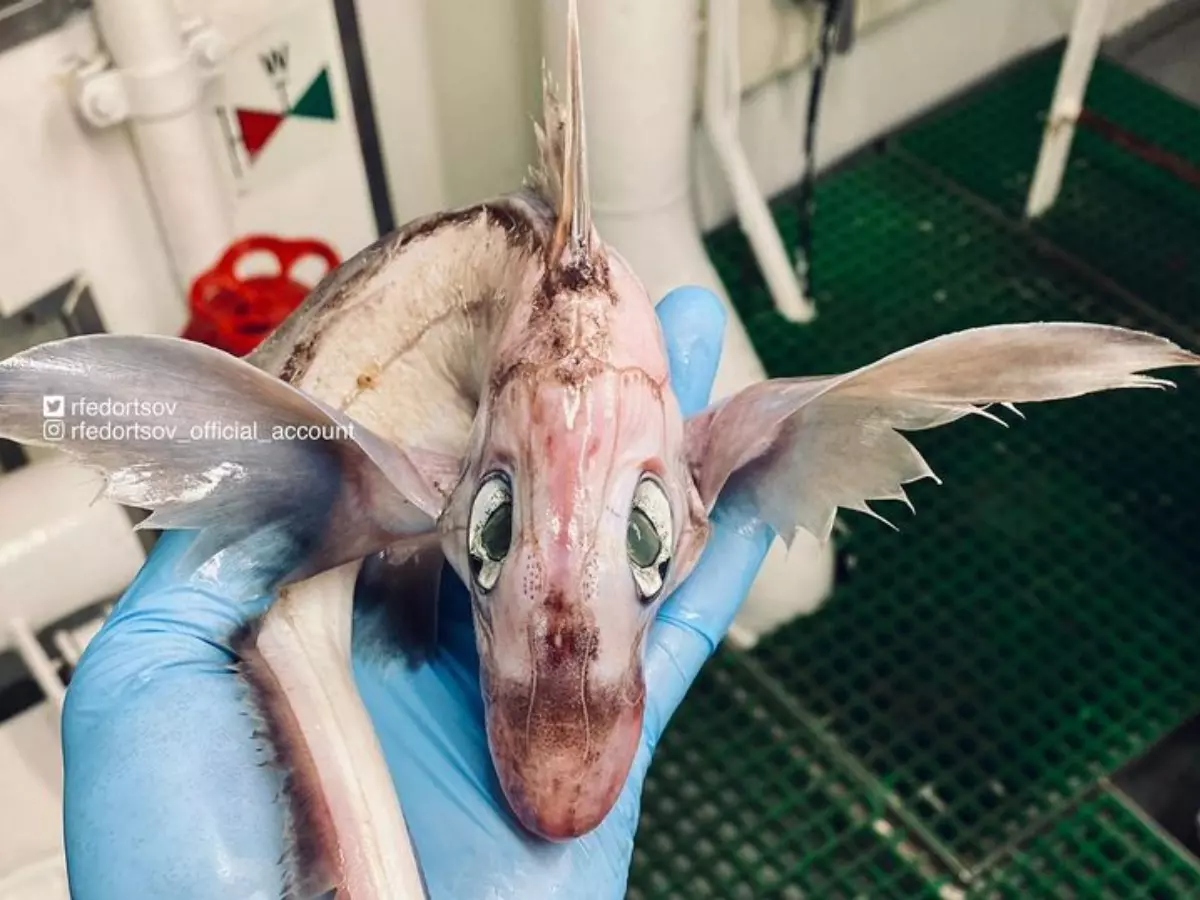It's A Baby Dragon - Fisherman Catches A Bizarre Sea Creature
A fisherman sailing the Norwegian Sea caught a bizarre 'baby dragon' fish, adding to the already weird collection of creatures he has pulled from waters.

A fisherman sailing the Norwegian Sea caught a bizarre 'dragon-like' fish, adding to the already weird collection of creatures he has pulled from waters.
Roman Fedortsov was fishing off the coast of Troms? in Norway when he came across the unusual-looking creature. Fedortsov often posts photos of the rare fish he finds while exploring the sea ¡ª but this one stood out and it's not hard to see why.
 Instagram/Roman Fedortsov
Instagram/Roman Fedortsov
A photo of the fish, which appears light pink in colour, with large eyes, wing shapes on the body and a long tail, has been compared to a 'baby dragon' by people online.
Sharing the picture on Instagram, Fedortsov
wrote: "Just a quote - 'It's one thing to chase something nameless, but quite another thing to find it' ¨C G.F. Lovecraft."
The fish was eventually identified as a chimaera ¡ª a cartilaginous fish also known as a ¡°ghost shark¡± ¡ª and it brought hundreds of comments from shocked viewers.
"It looks a little like a newly hatched dragon to me. Lol," one user commented.
¡°Looks mythological,¡± another stunned user wrote.
"It is better to look at such creatures from afar. Indeed, the depths of the sea are unknown," a third user commented.
Roman Fedortsov has become a viral sensation and looking at the bizarre creatures he has captured, you can understand why.
Recent peculiar sea creatures discovered included a sad looking pale toadfish, a sandy fish which appears to walk along the ocean floor and a small deep-sea dragon fish called a stoplight loose jaw.
Last year, a professional fisherman in the Netherlands was left stunned after he caught an extraordinary bright-yellow catfish.
Martin Glatz, who was fishing with his twin brother Oliver on a lake, had caught many catfish, but he had never seen anything like this before - a wels catfish.
 Martin Glatz/Live Science
Martin Glatz/Live Science
Wels catfish are reportedly native to lakes and rivers throughout Europe, and can grow to 2.7 metres long if they live to become fully grown.
The incredible fish may have had a rare genetic disorder known as leucism, a rare genetic disorder that causes a reduction of pigmentation in skin and hair.
For the latest from trending, click here.
